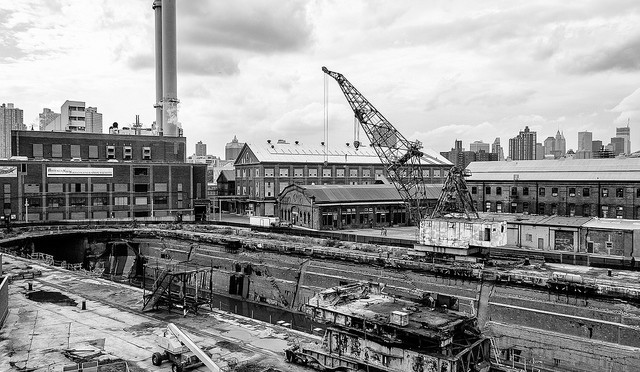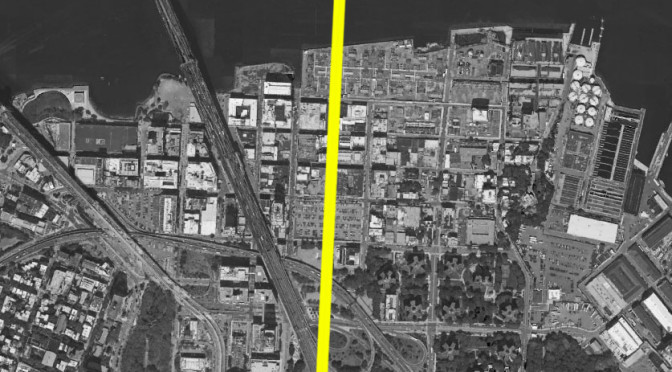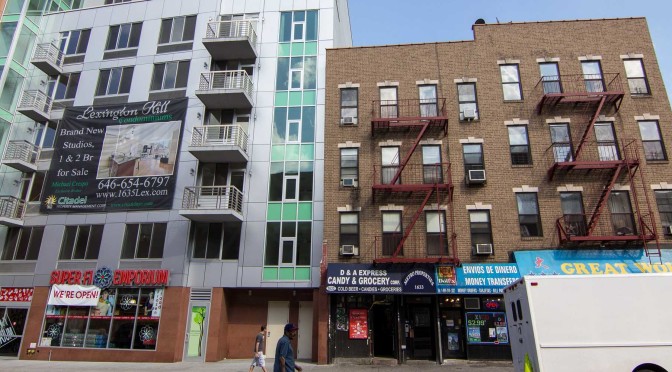Alice’s schematic design focused on a missing link beyond the Dumbo area that connects the historic naval shipyard and the developed commercial area. She modified her site with a stretching diagonal from the corner of Front and Jay Street to the opposite corner of Bridge and York Street. While a diagonal is the most immediate and effect way of reaching the opposing corners it ignores the apparent grid that exist in New York. Continue reading Schematic Design Review: Alice Stewart-Castner
All posts by Valerie A Alvarado
Separation of Spaces
Hamilton Road once separated the DUMBO site for our project in Brooklyn. This road inspired a separation between the public and private realms for the premise of my project. The idea was to take advantage of this road as a barrier between the two realms in order to create more designated spaces on the site. Continue reading Separation of Spaces
Side Effects of Gentrification
Periodical: TED Talks
Thesis: Gentrification creates a negative atmosphere amongst the native residents of the affected neighborhood and ultimately financially harms their livelihood.
The Merriam Webster defines gentrification as “the process of renewal and rebuilding accompanying the influx of middle class or affluent people into deteriorating areas that often displaces poorer residents”. The definition of gentrification alone lends itself to be defined as the destruction of lower class neighborhoods by the affluent population (personal opinion ! great !). Raising rent and housing prices as well as rebuilding the neighborhood creates a negative atmosphere amongst the native housing owners. Although bringing in gentrification can mean cleaner and safer streets it becomes difficult for the lower class families to afford the neighborhood anymore. Having a safer environment is definitely a desire but what good is it if those already occupying the space can no longer afford their rent or pay their bills? The criminals are forced out but so is everyone else.
I do not think that gentrification has to be the way that it is often looked at. A slow paced transformation of a city or a neighborhood can help out the community. I do not believe that a small upgrade in the convenience store down the street would hurt the community but rather give the community the opportunity to be able to purchase more attractive products that do not distress their financial situation. Gentrification does not have to be an attack on a city and it’s residents. It could be an opportunity for the community to improve financially with better paying jobs in safer and cleaned up cities. Instead of replacing small and local businesses why can we not build up those businesses and help them to thrive in this economy? Truthfully, it all comes down to money and who has more to throw around. A Payless shoe store can make dozens and dozens of shoes at a lower cost versus a small shop that can only make so many by hand and without a manufacturing plant. A better city does not have to mean fancy chain stores or four-star restaurants on every street corner. A better city starts with its residents and their actions. (How does this relate to architecture or urban design ? I believe you are hinting to it but not stating it clearly. Do you mean branding and it’s relationship to architecture?)
I think that gentrification is a huge topic that we as students should be discussing. In one of our last projects (third years) gentrification was an issue that we had to deal with. (eliminate unnecessary info) The residents of our site (which site? where?) didn’t want large luxury row houses in their neighborhoods. It was not a safe site and I feel that our biggest challenge to our clients was creating an environment in which they could feel safe in, not somewhere they felt that they did not belong. When building in any area it is absolutely important that we take into consideration the surrounding neighborhood and how our designs will affect the lives of the community. We have incredibly powerful tools in architecture that can help promote the places that we design. We have the power to dictate a semi-permanent piece of architecture (what do you mean by that?) that aids a city in becoming successful. Instead of gentrification we can create safer environments through architecture and build up our residents instead of throwing them out of the neighborhood. (How so ?)
Sources:
- Smith, Neil, and Peter Williams, eds. Gentrification of the City. Routledge, 2013.
- Freeman, Lance. There goes the hood: Views of gentrification from the ground up. Temple University Press, 2011.
- Lees, Loretta, Tom Slater, and Elvin Wyly. Gentrification. Routledge, 2013.
- Brown-Saracino, Japonica. The gentrification debates: a reader. Routledge, 2013.
- Palen, J. John, and Bruce London, eds. Gentrification, displacement, and neighborhood revitalization. SUNY Press, 1984.
- Davidson, Mark, and Loretta Lees. “New-build ‘gentrification’and London’s riverside renaissance.” Environment and planning A 37.7 (2005): 1165-1190.


